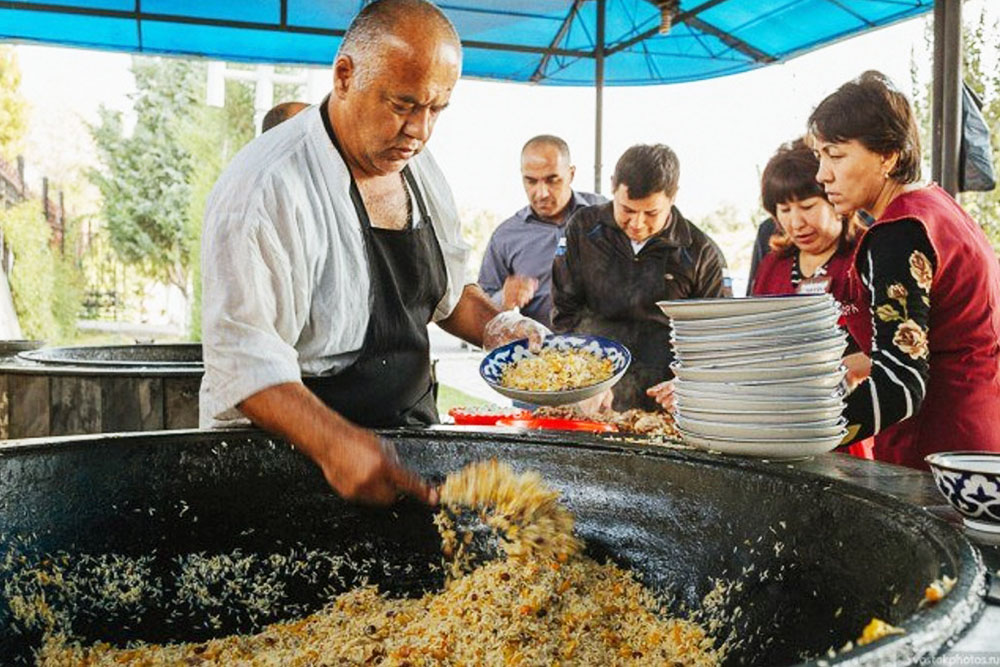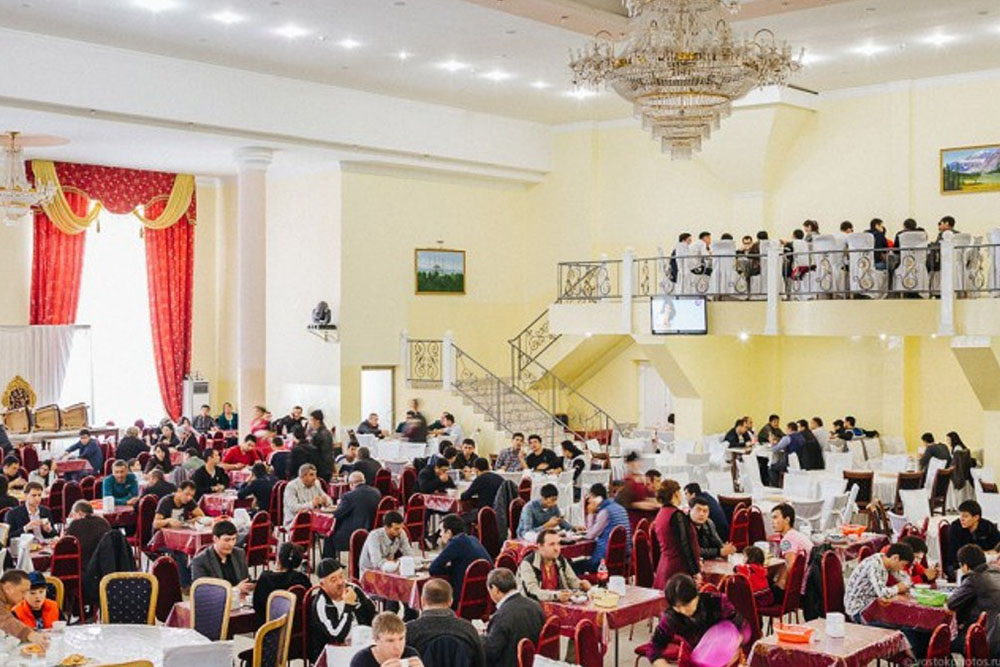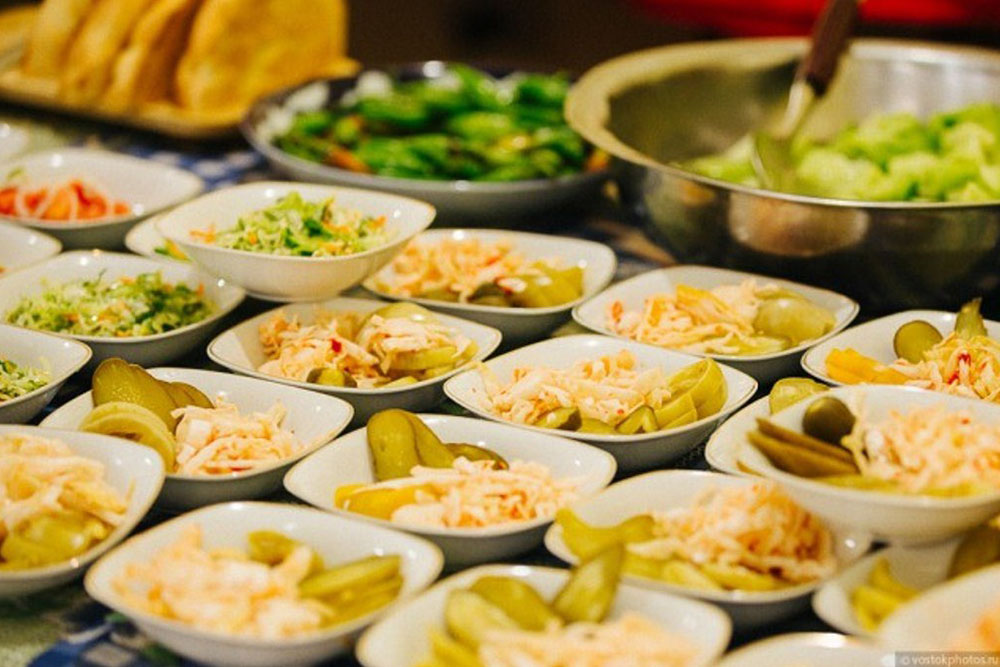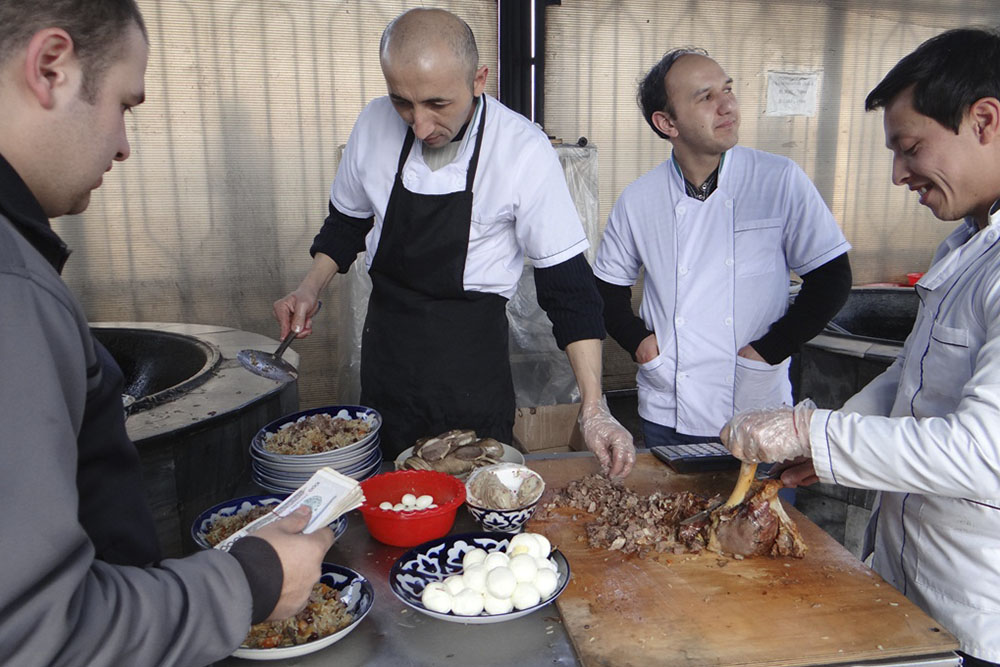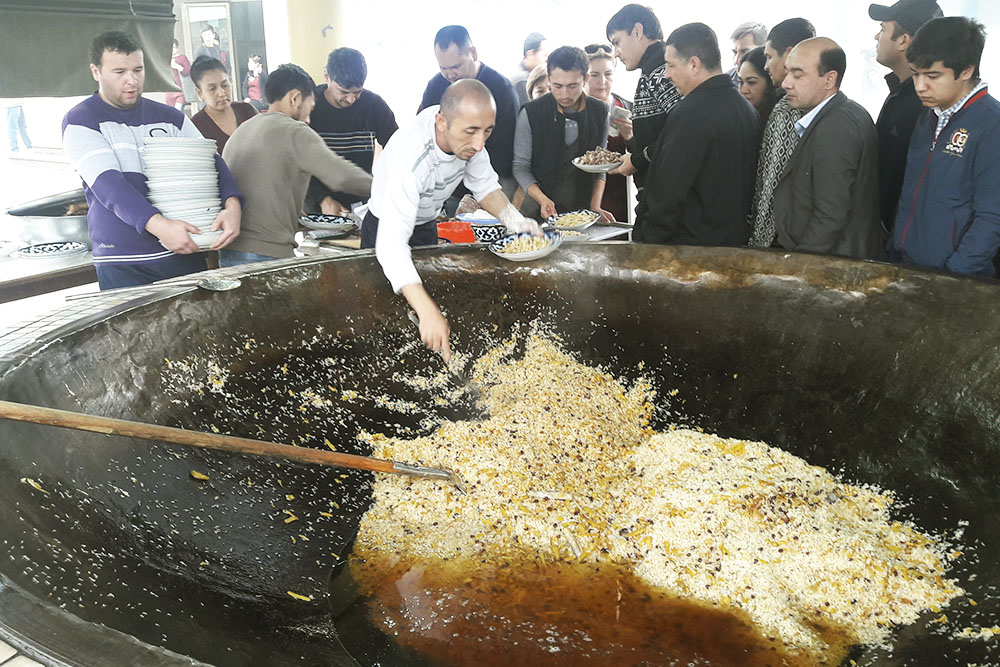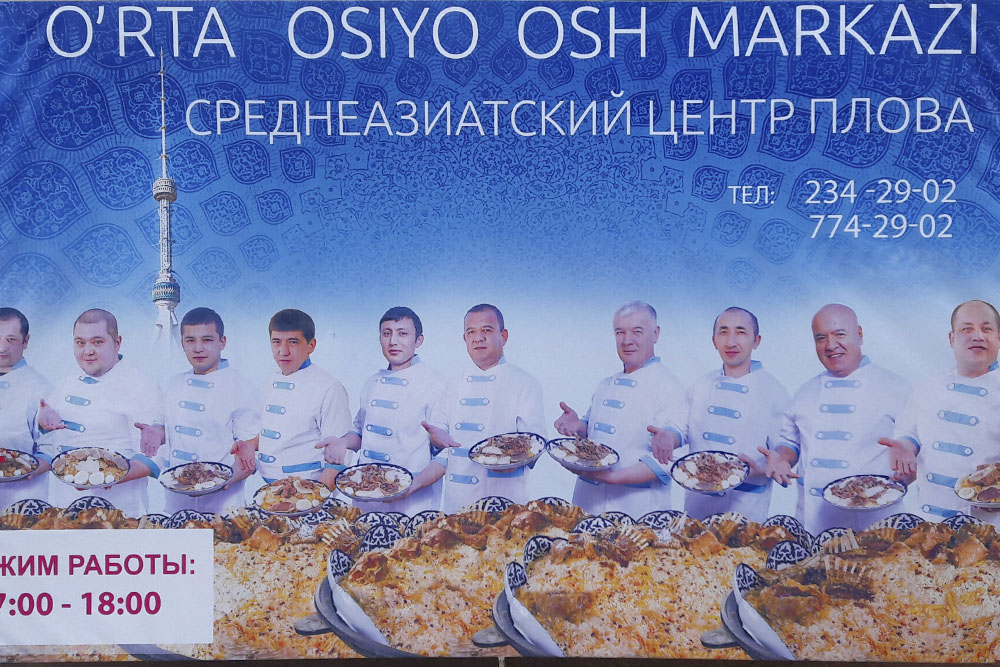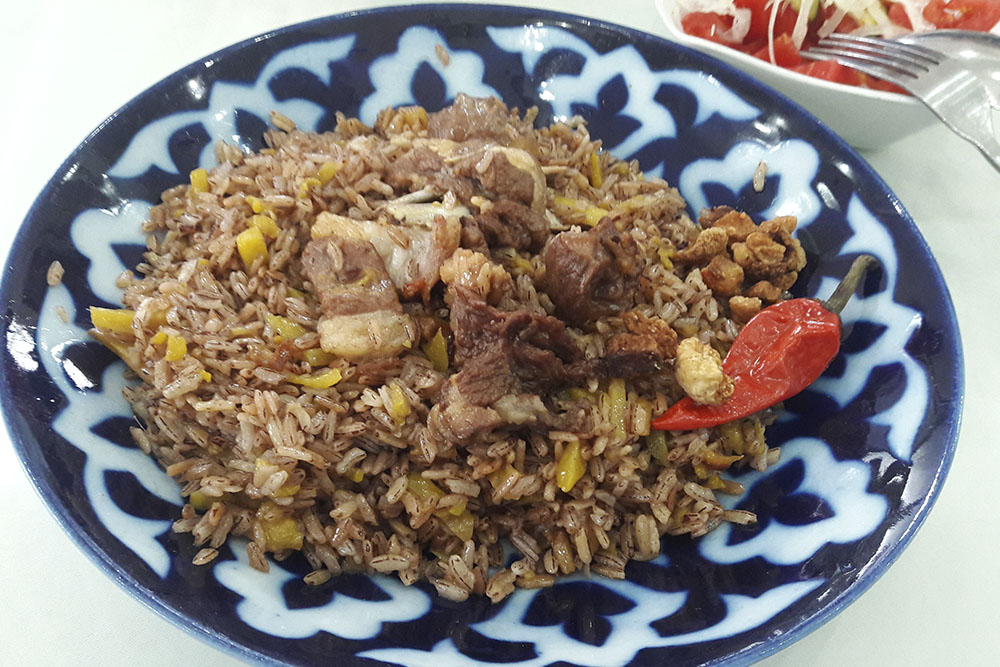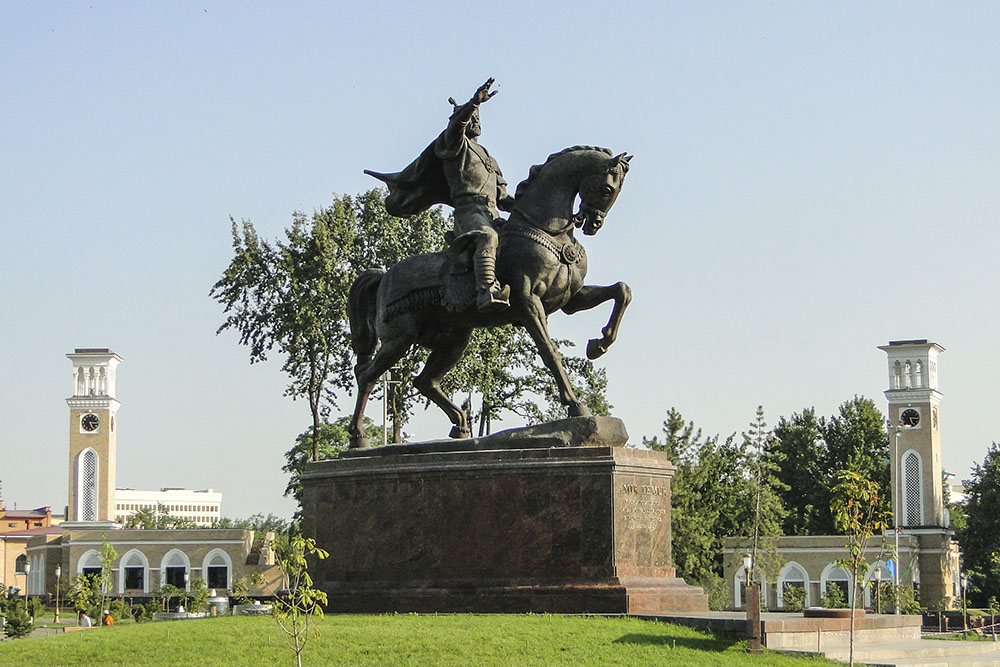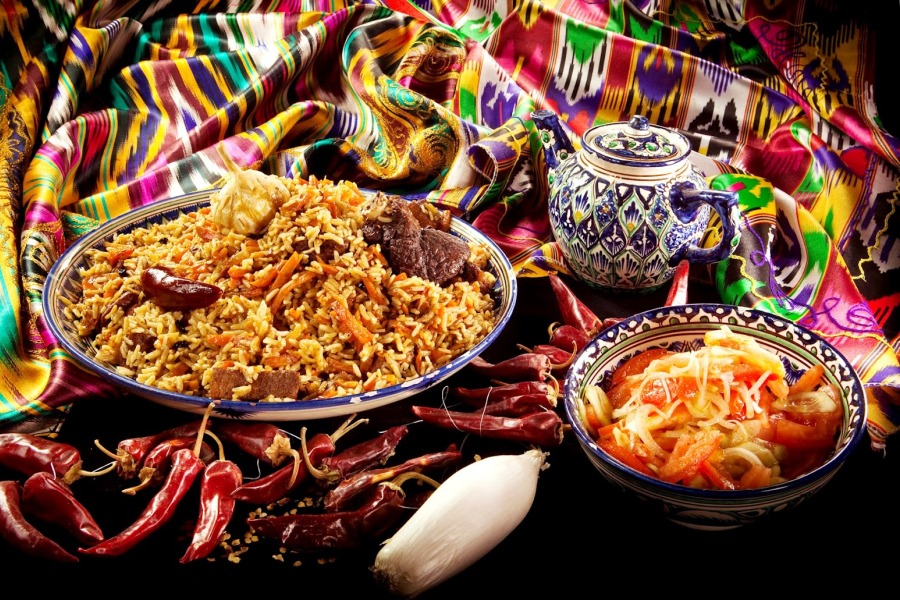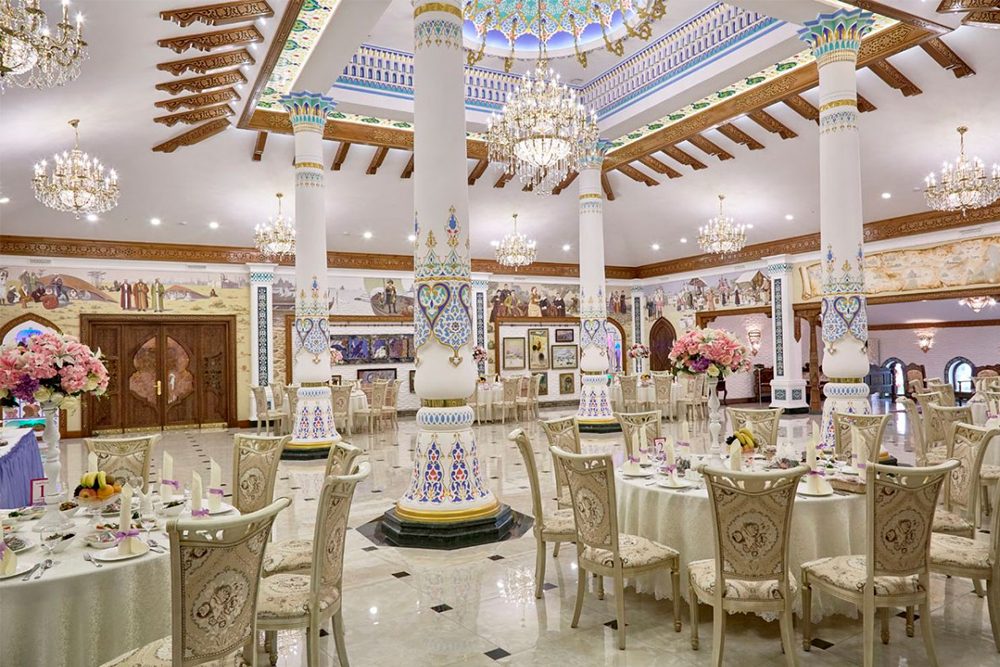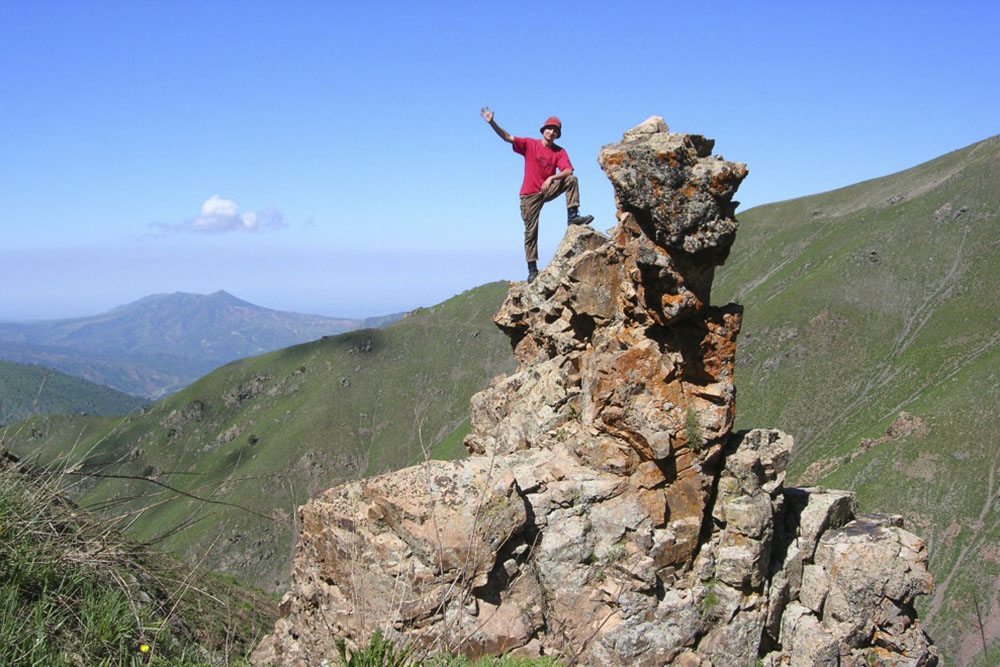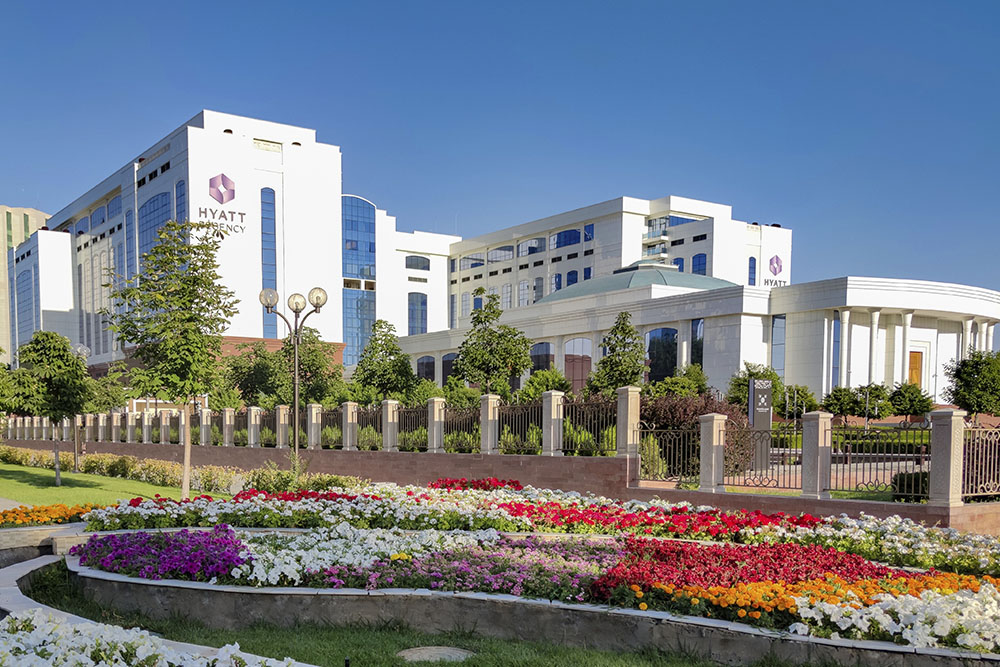The centre for pilaf in Tashkent (‘Osh Markazi’) can be mentioned among the city’s most unusual attractions. No doubt, every tourist would think it essential to visit the place and taste the most delicious pilaf in the Uzbek capital. Actually, there are quite a few places in Tashkent offering pilaf of a similar quality, but you can hardly find one comparable to the pilaf centre close to the Tashkent television tower in terms of cooking scale.
The centre’s story begins in the early 1990s. The establishment was organised in the small yard of an old house in Badamzar Street. In time, the centre grew so popular the old house could no longer seat all guests, and the restaurant had to move to a new building constructed for the purpose near the television tower.
Pilaf is the most popular dish in the Uzbek cuisine.
At the centre pilaf is cooked in 5 enormous cauldrons (kazans), each with a capacity of 50 kg of rice, in the yard, with wood as fuel. The cooking begins early in the morning, by 11 a.m. the pilaf is ready, and three hours later you can hardly find anything but empty cauldrons.
Pilaf is the only dish served as the main course at the centre, which also offers tea and a wide range of vegetable salads. Without any beer, wine or other alcoholic drinks.
The huge light hall of the restaurant can accommodate up to 500 people. The interior and tableware are plain and not meant to perform an artistic function. The main goal of the centre is to provide high-quality service to several thousands of clients visiting the place every day. Neat and attentive waiters moving quickly and noiselessly between the tables are able to serve about two thousand people during the lunch hours alone.
The centre offers two types of pilaf. The most popular is the Tashkent pilaf cooked commonly at wedding parties. The other is the specific Devzira pilaf from dark rice cultivated in the Fergana valley. The centre offers an optional takeaway service.
The centre for pilaf may appear highly interesting to foreign tourists, who can have a nice meal there and see a fragment of the real life of the Uzbek capital.




